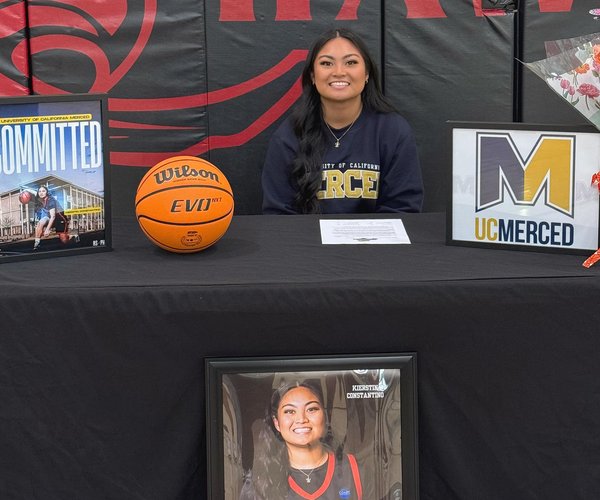STANFORD (AP) — They traveled here from all over the country. They packed pens and papers — and a list of questions — and studied for hours preparing for fall exams.
No, not students.
Like the venture capitalists who visit this Silicon Valley campus searching for new ideas every year, about a half-dozen NFL teams sent coaches this offseason to see Stanford defensive coordinator Derek Mason, whose unit has become its own kind of innovator in the offensive-oriented Pac-12 Conference.
Every coach wanted to know just what has been No. 4 Stanford’s secret to slowing down hurry-up offenses and solving read-option runs. Mason swears there’s no magic formula.
“It’s just things they hadn’t seen in a long time, but they know how to defend it. It’s just structurally you have to get back to, ‘OK, what does it look like in terms of putting the pieces together to make it happen?’” Mason said.
“It’s like an English 202 class. You go in and you understand the basics of English. But what you have to do is go in, refine it a little bit, write a couple of essays and papers and after you finish your dissertation you’re like, ‘OK, I can do this.’ So, really, guys are doing what they did 16, 17 years ago. Except, for the most part, it’s just retouching it.”
Nobody in the conference — and maybe the nation — has been ahead of the curve more than the Cardinal’s defense.
Stanford led the spread-heavy league in total defense, scoring defense, rushing defense, sacks and tackles for loss last season. The highlight came Nov. 17, when the Cardinal beat top-ranked Oregon 17-14 in overtime en route to a conference title and eventually the school’s first Rose Bowl victory in 41 years.
In the season’s first 10 games, the undefeated Ducks led the Football Bowl Subdivision with 54.8 points per game and had never scored fewer than 42 points. They averaged 325 yards rushing before the Cardinal held them to 198 in Eugene.
The game made defensive coordinators finally realize it was time to stop being surprised by what Stanford is doing and start learning how to do it themselves.
“People kind of respect what we do,” outside linebacker Trent Murphy said. “They want to try to figure out how we do it and manipulate it themselves. It’s a compliment and showing that we’re doing things right here.”
Stanford coach David Shaw said the relationship between his program and NFL coaches is nothing new. In the past two years alone, he has visited the Denver Broncos and sent assistants to the Tennessee Titans to share ideas.
What is different, Shaw said, is NFL coaches are publicizing the meetings at Stanford this offseason after the emergence of read-option quarterbacks such as Colin Kaepernick, Russell Wilson and Robert Griffin III coupled with Chip Kelly leaving Oregon to coach the Philadelphia Eagles.
Mason, the defensive backs coach for the Minnesota Vikings from 2007-09 and a former cornerback at Northern Arizona, doesn’t consider himself an expert by any means. While he’s a rising star in the college ranks, he said he learned as much or more about schemes than he taught in the summer sessions. No offensive coaches came.
“I’ve got offensive friends, but I think they stay as far away from me as they can,” Mason said.
The concepts are more complicated than the average person cares to comprehend, but the basic principles are Stanford’s defining characteristics: power and discipline.
The Cardinal have made up for a perceived lack of top-tier talent — they haven’t had a defensive player selected in the NFL draft the last two years — by using an advanced, gap-plugging 3-4 scheme that requires the right mix of smarts and savvy. Mason said the breakthrough really came after Stanford rallied to beat Arizona 54-48 in overtime Oct. 6, the only major blemish on a dominant defensive season.
He said Stanford played “soft” coverage against the spread-passing attack instead of being a “physical, nasty come-at-you football team.” From that point on, he has called games as an aggressor and not a reactor.
The other part of the formula is time and work.
Stanford dedicates at least one hour of practice every week to defending spread offenses, which started after losing 53-30 and 52-31 to Oregon the previous two seasons. The preparation includes two offenses — one running a play, the other ready to go to the line of scrimmage immediately after it’s over — going against the defense for when teams such as Oregon try to line up quickly.
“Our guys know and understand it’s hard. Each year’s different. There are no guarantees. We have to go out just like everybody else and earn our way through this every practice,” Mason said.
The scary part for offenses is Stanford’s defense should be even stronger this season.
The Cardinal, who open the season Sept. 7 against San Jose State, return nine of 11 starters and go two deep at nearly every position. The defensive depth is perhaps the biggest reason the school has its highest ranking ever in the AP preseason poll and is expected to contend for another Pac-12 title and its first BCS championship.
“We do have the pieces, the maturity and the correlation of talent to be the best defense in the country this year,” senior linebacker Shayne Skov said. “It’s by no means guaranteed at all. It’s just that we have the resources around us to make it happen. Whether it happens is up to us. We are aware of what we have as a unit and we want to get it done.”
Stanfords defense staying ahead of the curve





